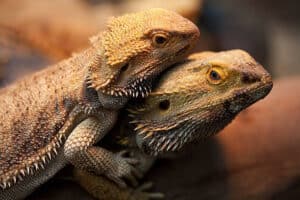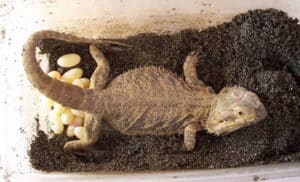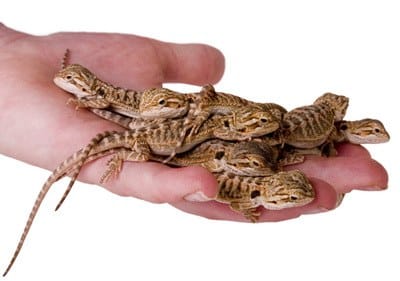Introduction: Why breed bearded dragons?
Bearded dragons are amazing lizards that make great pets. They are friendly, docile, and interesting to watch. Many people choose to breed bearded dragons because they enjoy watching them grow and reproduce.
Bearded dragons are easy to breed in captivity. They have a short breeding season and do not require much care or attention. Breeding bearded dragons can be a fun and rewarding experience for those who are interested in lizard husbandry.
The basics: what you need to know
Bearded dragons are one of the most popular lizard pets. They are easy to care for and make great reptilian companions. If you’re thinking about breeding bearded dragons, there are a few things you need to know. Here are some basic steps to get you started:
1. Choose your breeding stock carefully. Bearded dragons come in a variety of colors and patterns, so you’ll want to choose a pair that has complementary coloring. You’ll also want to make sure that both lizards are healthy and free of any genetic defects.
2. Set up a suitable habitat for your dragons. Bearded dragons are native to Australia, so they need an enclosure that simulates their natural environment as closely as possible. This means providing them with plenty of space, a basking area, and hiding places.
3. Introduce your dragons slowly.
Setting up a breeding tank
A breeding tank for bearded dragons should be set up before the arrival of the animals. The tank should be at least 10 gallons and have a secure lid. It is important to have two hide spots for the dragons, as well as a basking area with a heat lamp. The tank should be decorated with rocks and plants to make it look like the animal’s natural habitat.
Bearded dragons are territorial animals, so it is important to have just one male and one female. If there are multiple males in the same tank, they will fight for dominance. If there are multiple females in the same tank, they will also fight for dominance. It is best to introduce the animals to each other slowly, by puting them in separate sections of the tank and letting them get used to each other’s presence.
Once the animals are introduced, they will start mating.
Mating your dragons
 Mating your dragons can be a tricky process, but with a little patience and preparation, it can be done successfully.
Mating your dragons can be a tricky process, but with a little patience and preparation, it can be done successfully.
Here are a few things to keep in mind when breeding your dragons:
First, make sure that both the male and female dragons are healthy and of good size.
It’s also important to choose a pair that is not related, as this can lead to genetic defects in the offspring.
Once you’ve found a suitable pair, the next step is to prepare a nesting area for the female.
This should be a warm, dry place where she can lay her eggs in safety.
Once the eggs are laid, they will need to be incubated at a temperature of around 80 degrees Fahrenheit.
Once the eggs have hatched, it’s important to raise the young dragons separately from their parents.
This will help prevent them from fighting or cannibalizing each other.
Caring for the eggs
 Bearded dragons are oviparous, meaning they lay eggs.
Bearded dragons are oviparous, meaning they lay eggs.
The female will lay a clutch of about 20-30 eggs and then bury them in the sand.
The male will then guard the eggs until they hatch about 60-80 days later.
During this time, it is important to make sure the temperature in the enclosure is correct and that the humidity levels are high enough to prevent the eggs from drying out.
After the eggs hatch, the parents should be removed from the enclosure as they may eat their young.
Raising the bearded dragon babies
There are a few key steps to take when caring for a baby bearded dragon. First, it’s important to provide them with a comfortable and warm environment. A basking spot should be available for them to regulate their body temperature. Secondly, they need a diet that consists of small insects and greens. Be sure to dust the insects with calcium powder to prevent health problems down the road. Lastly, baby dragons require frequent baths in shallow water to help them shed their skin properly.


